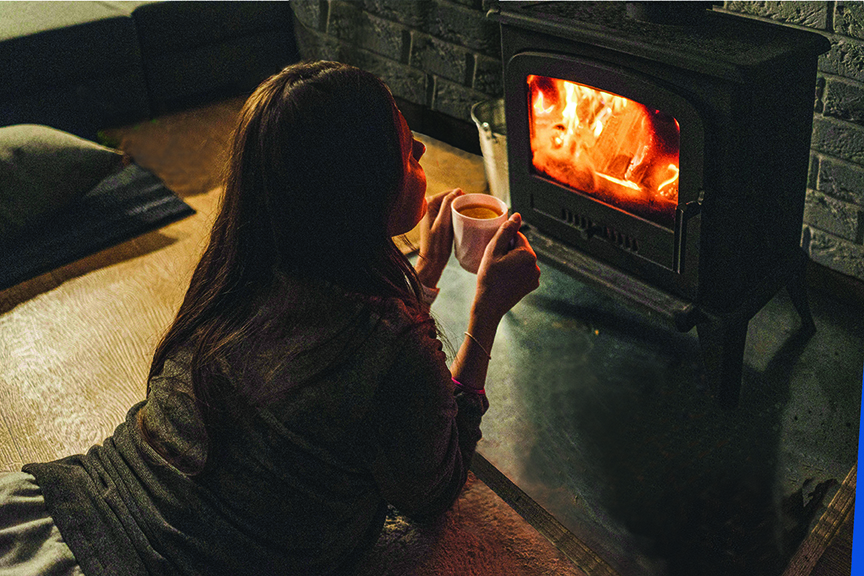How to stay both safe and warm in chilly weather
October 2025

With their rustic charm and reliable warmth, crackling woodstoves make spaces cozy during winter. But without proper care, woodstoves pose serious fire risks.
by Alice Kemp, Virginia Farm Bureau Federation
After a cold day on their Christmas tree farm, Ronald and Roberta Clouse love to warm up by their woodstove.
“When I’m plowing snow or working outside all day in the cold, it’s nice to be able to come in and get near the woodstove,” Ronald says. “It puts out a good heat.”
With their rustic charm and reliable warmth, crackling woodstoves make spaces cozy during winter. But that homey comfort comes with responsibility. Without proper care, woodstoves pose serious fire risks.
MAINTENANCE ROUTINES
The Clouses heat their home with two woodstoves and begin preparations well before the first frost. Their chimneys are inspected and cleaned thoroughly each fall, and Ronald meticulously checks the woodstoves — replacing cracked or deteriorating fire bricks so they’re functioning safely and efficiently.
“I also check the chimneys about midway through the heating season to ensure everything is still in good shape,” he says. “Each stove sits on a wide stone hearth without furniture or anything nearby that could catch fire.”
CLEAN CHIMNEYS, SAFE HOMES
“The main issue with woodstoves is chimney fires,” says Nathan Fox, assistant chief of Tazewell County’s Clearfork Volunteer Fire Department. “Most are due to poor chimney maintenance or burning wood that hasn’t been properly seasoned.”
According to the National Fire Protection Association, home heating equipment is the second leading cause of home fires and third leading cause of home fire deaths.
Dirty chimneys, usually caused by the buildup of creosote — the highly combustible residue that accumulates inside chimneys — is one of the leading causes of chimney fires.
While small amounts of creosote are normal when operating woodstoves, burning wet or unseasoned wood, or not addressing issues with airflow, causes more creosote to amass faster. Left untreated, creosote buildup significantly increases fire risk.
A 20-year fire service veteran, Fox has also repeatedly responded to attic fires caused by neglected, cracked chimneys. He strongly suggests having multiple working smoke and carbon monoxide detectors inside a home as well keeping a working fire extinguisher nearby and calling 911 as soon as you think there might be a fire issue.
“Time is never on your side when fighting fire,” Fox stresses. “It takes time for dispatch to page the fire department and for firefighters to arrive. That one phone call will get the ball rolling.”
WOODSTOVE SAFETY CHECKLIST
- Burn only dry, well-seasoned hardwood. Avoid burning wet or green wood, paper, plastic and trash. Don’t ever overload your woodstove.
- Have chimneys professionally inspected and cleaned annually.
- Keep a 3-foot clearance around your woodstove — no rugs, furniture or flammable materials of any kind.
- Inspect, maintain and replace woodstove components: firebricks, door seals, gaskets, stove pipes, ash buildup.
- Use dampers and air controls properly to regulate burn and airflow.
- Always extinguish a fire before going to bed or leaving home.
- Store ashes in a metal container with lid at least 10 feet from the house.
- Test smoke and carbon monoxide detectors regularly and replace batteries. Keep a fire extinguisher within reach and ensure everyone knows how to use it.
